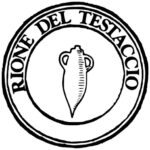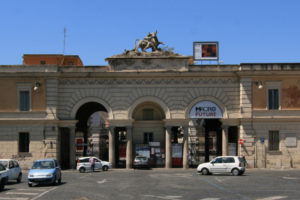 The Testaccio District, the 20th district of Rome (R. XX), established in 1921, takes its name from Monte Testaccio, an artificial hill made up of fragments of Roman amphorae, a reminder of its key role in ancient trade along the Tiber with its port. It was originally located outside the city walls, with warehouses and related activities.
The Testaccio District, the 20th district of Rome (R. XX), established in 1921, takes its name from Monte Testaccio, an artificial hill made up of fragments of Roman amphorae, a reminder of its key role in ancient trade along the Tiber with its port. It was originally located outside the city walls, with warehouses and related activities.
Historically subject to floods and malaria, it was transformed after 1870 into an important industrial center, notably with the former slaughterhouse.
Today, Testaccio retains a distinct identity, blending tradition and modernity. It features many functional buildings with former factories, in contrast with the nearby historic center of Rome.
The district is now known for its Roman cuisine and lively nightlife, with bars and clubs.
Major sites, apart from the hill itself, include the Pyramid of Cestius and the Non-Catholic Cemetery.
The coat of arms of the District depicts a golden amphora on a red background, symbolizing Monte Testaccio, the hill formed of broken amphorae.




